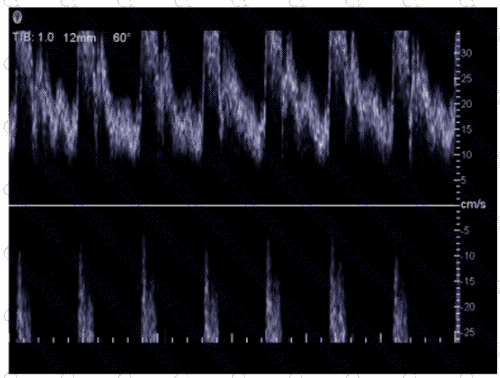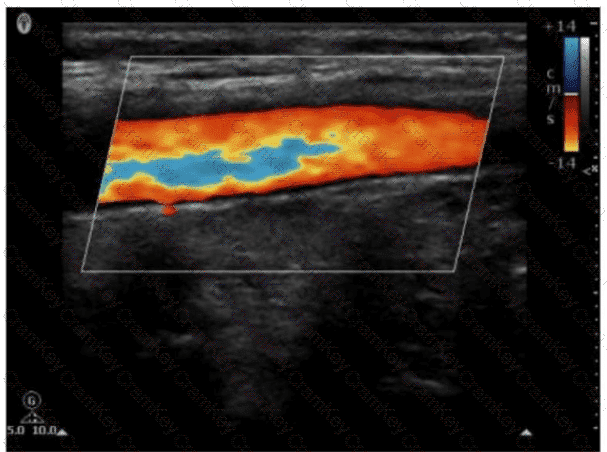Comprehensive and Detailed Explanation From Exact Extract:
Aliasing occurs in pulsed-wave Doppler imaging when the Doppler shift frequency exceeds the Nyquist limit (which is half the pulse repetition frequency, PRF). This results in a wrap-around of the Doppler signal, which appears as a reversal of flow direction (aliasing artifact).
According to standard Principles and Instrumentation references in sonography:
“To eliminate aliasing, the Doppler PRF (scale) should be increased. Increasing the PRF raises the Nyquist limit and therefore allows for higher measurable velocities without aliasing.”
The correct adjustment to correct this aliasing artifact isC: Increase the Doppler pulse repetition frequency. This effectively increases the Nyquist limit and resolves the wrap-around aliasing appearance.
Options A and B (adjusting the spectral Doppler gain) would only change the appearance of the Doppler waveform (i.e., its amplitude and brightness) but would not affect aliasing. Option D (decreasing the PRF) would actually worsen the aliasing by lowering the Nyquist limit.
Therefore, the correct choice is toincrease the Doppler PRF.

